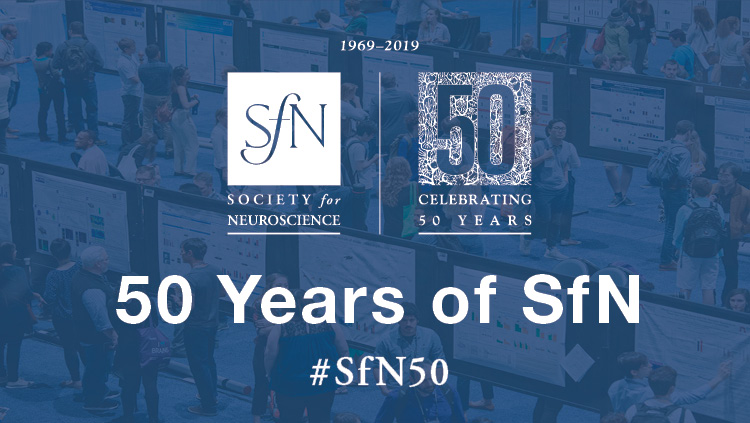Looking Back: SfN's First 50 Years

Learn the big milestones and key points in the history of SfN over the last 50 years since its official founding in June 1969! Visit the History of SfN for an even deeper dive into the Society's history.
- On June 16, 1969, the 20-member Committee on Brain Sciences met in Washington, DC, to create an organization to support the emerging field of neuroscience. The Society of Neuroscience was born out of that meeting.
- SfN’s first acting president was Ed Perl of the University of Utah, who had drafted a constitution and bylaws for the organization in its infancy. Perl later recalled that "there were pleas for an organization to promote the public image of work on the nervous system and to enhance financial support for it."
- The name “Society for Neuroscience” was the result of lengthy debate before being chosen for its simplicity and the broad application of the term “neuroscience.” Other names proposed in 1969 included “American Neurosciences Society” and “Society for Research on the Nervous System.”
- In 1971 SfN established the Education Committee, committed to providing resources for setting up new neuroscience departments at leading academic institutions and establishing a directory of neuroscience programs for members.
- At the 10th annual meeting in Cincinnati more than 200 female neuroscientists attended a reception sponsored by the Association for Women in Science. This group “unanimously voted to formalize their desire for a women’s caucus,” to be known as Women in Neuroscience (WiN).
- As a part of a push for "the education of the public on the methods, achievements, and benefits of neuroscience," in 1989 SfN began collecting contributions for the establishment of a Public Education Fund. Within six months, these funds were used in the publishing of the first Brain Facts.
- Within the first ten years of it’s founding, SfN members grew to include seven Nobel Laureates recognized for their neuroscience research, including Julius Axelrod.
- At the 1979 annual meeting, the Social Issues Committee established a Subcommittee on Minority Affairs, chaired by Catherine Cornwell-Jones, to recruit minority members to the field and the Society and to "expand the role of minorities in the policymaking processes of the Society." These efforts culminated in the establishment of the Minority Traveling Fellowship in 1981, which continues to this day as the Neuroscience Scholars Program.
- In 1995, as part of its advocacy for the Decade of the Brain, SfN’s Public Information Office began publishing Brain Waves, a quarterly bulletin for congressional health aides, to communicate “the far-reaching impact of neuroscience research and … the Society’s interests to policymakers and other significant lay audiences.”
- The Society for Neuroscience started with just 20 founding members. Today the Society boasts nearly 35,000 members from more than 90 countries.

















